- Home
- Arthur C. Clarke
Firstborn to-3
Firstborn to-3 Read online
Firstborn
( Time Odyssey - 3 )
Arthur C. Clarke
Stephen Baxter
The Firstborn — the mysterious race of aliens who first became known to science fiction fans as the builders of the iconic black monolith in 2001: A Space Odyssey — have inhabited legendary master of science fiction Sir Arthur C. Clarke’s writing for decades. With Time’s Eye and Sunstorm, the first two books in their acclaimed Time Odyssey series, Clarke and his brilliant co-author Stephen Baxter imagined a near-future in which the Firstborn seek to stop the advance of human civilization by employing a technology indistinguishable from magic.
Their first act was the Discontinuity, in which Earth was carved into sections from different eras of history, restitched into a patchwork world, and renamed Mir. Mir’s inhabitants included such notables as Alexander the Great, Genghis Khan, and United Nations peacekeeper Bisesa Dutt. For reasons unknown to her, Bisesa entered into communication with an alien artifact of inscrutable purpose and godlike power — a power that eventually returned her to Earth. There, she played an instrumental role in humanity’s race against time to stop a doomsday event: a massive solar storm triggered by the alien Firstborn designed to eradicate all life from the planet. That fate was averted at an inconceivable price. Now, twenty-seven years later, the Firstborn are back.
This time, they are pulling no punches: They have sent a “quantum bomb.” Speeding toward Earth, it is a device that human scientists can barely comprehend, that cannot be stopped or destroyed — and one that will obliterate Earth.
Bisesa’s desperate quest for answers sends her first to Mars and then to Mir, which is itself threatened with extinction. The end seems inevitable. But as shocking new insights emerge into the nature of the Firstborn and their chilling plans for mankind, an unexpected ally appears from light-years away.
From the Hardcover edition.
Arthur C. Clarke and Stephen Baxter
Firstborn
Part 1 FIRST CONTACTS
1: Bisesa
February 2069
It wasn’t like waking. It was a sudden emergence, a clash of cymbals. Her eyes gaped wide open, and were filled with dazzling light.
She dragged deep breaths into her lungs, and gasped with the shock of selfhood.
Shock, yes. She shouldn’t be conscious. Something was wrong.
A pale shape swam in the air.
“Doctor Heyer?”
“No. No, Mum, it’s me.”
That face came into focus a little more, and there was her daughter, that strong face, those clear blue eyes, those slightly heavy dark brows. There was something on her cheek, though, some kind of symbol. A tattoo?
“Myra?” She found her throat scratchy, her voice a husk. She had a dim sense, now, of lying on her back, of a room around her, of equipment and people just out of her field of view. “What went wrong?”
“Wrong?”
“Why wasn’t I put into estivation?”
Myra hesitated. “Mum — what date do you think it is?”
“2050. June fifth.”
“No. It’s 2069, Mum. February. Nineteen years later. The hi -
bernation worked.” Now Bisesa saw strands of gray in Myra’s dark hair, wrinkles gathering around those sharp eyes. Myra said, “As you can see I took the long way round.”
It must be true. Bisesa had taken another vast, unlikely step on her personal odyssey through time. “Oh, my.”
Another face loomed over Bisesa.
“Doctor Heyer?”
“No. Doctor Heyer has long retired. My name is Doctor Stan-ton. We’re going to begin the full resanguination now. I’m afraid it’s going to hurt.”
Bisesa tried to lick her lips. “Why am I awake?” she asked, and she immediately answered her own question. “Oh. The Firstborn. ”
What could it be but them? “A new threat.”
Myra’s face crumpled with hurt. “You’ve been away for nineteen years. The first thing you ask about is the Firstborn. I’ll come see you when you’re fully revived.”
“Myra, wait—”
But Myra had gone.
The new doctor was right. It hurt. But Bisesa had once been a soldier in the British Army. She forced herself not to cry out.
2: Deep Space Monitor
June 2064
Mankind’s first clear look at the new threat had come five years earlier. And the eyes that saw the anomaly were electronic, not human.
Deep Space Monitor X7-6102-016 swam through the shadow of Saturn, where moons hung like lanterns. Saturn’s rings were a ghost of what they had been before the sunstorm, but as the probe climbed the distant sun set behind the rings, turning them into a bridge of silver that spanned the sky.
The Deep Space Monitor was not capable of awe, not quite. But like any sufficiently advanced machine it was sentient to some degree, and its electronic soul tingled with wonder at the orderly marvels of gas and ice through which it sailed. But it made no effort to explore them.
Silently, the probe approached the next target on its orbital loop.
Titan, Saturn’s largest moon, was a featureless ball of ocher, dimly lit by the remote sun. But its deep layers of cloud and haze hid miracles. As it approached the moon, DSM X7-6102-016 cautiously listened to the electronic chatter of a swarm of robot explorers.
Under a murky orange sky, beetle-like rovers crawled over dunes of basalt-hard ice-crystal “sand,” skirted methane geysers, crept cautiously into valleys carved by rivers of ethane, and dug into a surface made slushy by a constant, global drizzle of methane. One brave balloon explorer, buoyed by the thick air, hovered over a cryovolcano spilling a lava of ammonium-laced water. Burrowing submersibles studied pockets of liquid water just under the ice surface, frozen-over lakes preserved in impact craters. There were complex organic products everywhere, created by electrical storms in Titan’s atmosphere, and by the battering of the upper air by sunlight and Saturn’s magnetic field.
Everywhere the probes looked, they found life. Some of this was Earthlike, anaerobic methane-loving bugs sluggishly building pillows and mounds in the cold brine of the crater lakes. A more exotic sort of carbon-based life-form, using ammonia rather than water, could be found swimming in the stuff bubbling out of the cryovolcanoes. Most exotic of all was a community of slimelike organisms that used silicon compounds as their basic building blocks, not carbon; they lived in the piercing cold of the black, mirror-flat ethane lakes.
The crater-lake bugs were cousins of Earth’s great families of life. The ammonia fish seemed to be indigenous to Titan. The cold-loving ethane slime might have come from the moons of Neptune, or beyond. The solar system was full of life — life that blew everywhere, in rocks and lumps of ice detached by impacts. Even so Titan was extraordinary, a junction for life-forms from across the solar system, and maybe even from without.
But Deep Space Monitor X7-6102-016 had not come to Titan for science. As it passed through its closest approach to the moon and its carnival of life, its robot cousins did not even know it was there.
The Deep Space Monitor’s complex heart was a space probe built to a century-old design philosophy, with an angular frame from which sprouted booms holding sensor pods and radiothermal-isotope power units. But this inner core was surrounded by a rigid shell of “metamaterial,” a mesh of nanotechnological washers and wires that shepherded rays of sunlight away from the probe and sent them on their way along paths they would have taken had the probe not been present at all. The Deep Space Monitor was not blind; the shell sampled the incoming rays. But with light neither reflected nor deflected, it was rendered quite invisible. Similarly it was unde-tectable on any wavelength of radiation from hard gamma rays to long radio w
aves.
DSM X7-6102-016 was not an explorer. Shrouded, silent, it was a sentry. And now it was heading for an encounter of the sort for which it had been designed.
As it skimmed over the cloud tops of Titan, the moon’s gravity field slingshot X7-6102-016 onto a new trajectory that would take it out of the plane of the Saturn system, high above the rings. All this in radio silence, without a puff of rocket exhaust.
And DSM X7-6102-016 approached the anomaly.
It detected cascades of exotic high-energy particles. And it was brushed by a powerful magnetic field, a ferocious electromagnetic knot in space. It reported to Earth, sending a stream of highly compressed data using sporadic laser bursts.
The Deep Space Monitor had no means of adjusting its course without compromising its shroud, and so it sailed on helplessly. It should have missed the anomaly by perhaps half a kilometer.
Its last observation, in a sense its last conscious thought, was of a sudden twisting of the anomaly’s strong magnetic field.
DSM X7-6102-016’s final signals showed it receding at enormous, impossible speeds. They were signals the probe’s makers could neither believe nor understand.
Like any sufficiently advanced machine the anomaly was sentient to some degree. The destruction it had been designed to inflict was for the future, and did not yet trouble it. But it was touched by a hint of regret at the smashing of the puppyish machine that had followed it so far, with its laughable attempt at concealment.
Alone, the anomaly sailed through Saturn’s system, harvested momentum and kinetic energy from the giant planet, and flung itself toward the distant sun, and the warm worlds that huddled around it.
3: Abdikadir
2068 (Earth); Year 31 (Mir)
On Mir the first hint of the coming strangeness would have been mundane, if not for its utter incongruity.
Abdikadir was irritated when the clerk called him away from the telescope. It was a clear night, for once. The first-generation refugees from Earth always complained about the cloudiness of Mir, this stitched-together world in its own stitched-together cosmos. But tonight the seeing was fine, and Mars swam high in the cloudless sky, a brilliant blue.
Before the clerk’s interruption the observatory on the roof of the Temple of Marduk was a scene of silent industry. The main instrument was a reflector, its great mirror ground by Mongol slaves under the command of a Greek scholar of the School of Othic. It returned a fine if wavering image of the face of Mars. As Abdi observed, his clerks turned the levers that swung the telescope mount around to counterbalance the rotation of the world, thus keeping Mars steadily in the center of Abdi’s field of view. He sketched hastily at the pad strapped to his knee; industry in Alexander’s world-empire had not yet advanced to the point where photogra-phy was possible.
Of Mars, he could clearly see the polar caps, the blue seas, the ocher deserts crisscrossed by bands of green-brown and blue, and even a glimmer of light from the alien cities that were believed to nestle in the dead caldera of Mons Olympus.
It was while he was engaged on his labor, intent on exploiting every second of the seeing, that the clerk came to Abdi. Spiros was fourteen, an Othic student, third-generation Mir-born. He was a bright, imaginative boy but prone to nervousness, and now he could barely stammer out his news to an astronomer not a decade older than he was.
“Calm down, boy. Take a breath. Tell me what’s wrong.”
“The chamber of Marduk—” The very heart of the temple on whose roof they both stood. “You must come, Master!”
“Why? What will I see?”
“Not see, Master Abdi —hear. ”
Abdi glanced once more at his eyepiece, where even now Mars’s blue light glimmered. But the boy’s agitation was convincing.
Something was wrong.
With ill grace he clambered down from his seat at the eyepiece, and snapped at one of his students. “You, Xenia! Take over. I don’t want to waste a second of this seeing.” The girl hurried to comply.
Spiros ran for the ladder.
“This had better be worth it,” Abdi said, hurrying after the boy.
They had to descend, and then climb back up inside the temple’s carcass, for the chamber of the great god Marduk was near the very apex of the complex. They passed through a bewildering variety of rooms lit by oil lamps burning smokily in alcoves. Long after the temple’s abandonment by its priests there was still a powerful smell of incense.
Abdi walked into Marduk’s chamber, peering around.
Once this room had contained a great golden statue of the god.
During the Discontinuity, the event that created the world, the statue had been destroyed, and the walls had been reduced to bare brick, scorched by some intense heat. Only the statue’s base remained, softened and rounded, with perhaps the faintest trace of two mighty feet. The chamber was a ruin, as if wrecked by an explosion. But it had been this way all Abdi’s life.
Abdi turned on Spiros. “Well? Where’s the crisis?”
“Can’t you hear?” the boy asked, breathless. And he stood still, his finger on his lips.
And then Abdi heard it, a soft chirruping almost like a cricket — but too regular, too even. He glanced at the wide-eyed boy, who was frozen with fear.
Abdi stepped into the center of the room. From here he could tell the chirruping was coming from an ornately carved shrine, fixed to one wall. He approached this now, and the sound grew louder.
For the sake of face before the boy, Abdi tried to keep his hand from trembling as he reached out to the small cupboard at the very center of the shrine, and pulled open its door.
He knew what the shrine contained. This pebble-like artifact had come from the Earth to Mir. Belonging to a companion of Abdi’s father’s called Bisesa Dutt, it had been cherished for years, and then lodged here when its power finally failed.
It was a phone.
And it was ringing.
Part 2 JOURNEYS
4: When the Sleeper Wakes
February — March 2069
Bisesa was glad to get out of the sleep facility itself. It stank of the bad-egg hydrogen sulphide they used to stop your organs taking up oxygen.
In the hospital, it took the doctors three days to put her blood back into her veins, to persuade her organs to take up oxygen, and to get her through enough basic physiotherapy that she could walk with a Zimmer frame. She felt unutterably old, older than her forty-nine biological years, and she was wasted too, a famine victim. Her eyes were particularly prickly and sore. She suffered odd vision defects, even mild hallucinations at first. Also she had the unpleasant sense that she smelled of her own urine.
Well, for nineteen years she had had no pulse, no blood, no electrical activity in her brain, her tissues had consumed no oxygen, and she had been held in a fridge almost cold enough to rupture her cells. You had to expect to be a bit sore.
Hibernaculum 786 had changed while she had been in the tank.
Now it felt like an upmarket hotel, all glass walls and white floors and plastic couches, and old, old people — at least they looked old—
in dressing gowns, walking very tentatively.
Most drastically of all the Hibernaculum had been moved.
When she got to a viewing window, she found herself overlooking an immense wound in the ground, a dusty canyon with strata piled up in its scree-littered walls like the pages of a tremendous book. It was the Grand Canyon, she learned, and it was a spectacular sight — rather wasted on the sleepers in the Hibernaculum, she thought.
She found it disturbing in retrospect that the complicated re-frigerator within which she had slept her dreamless sleep had been disconnected, uprooted, and shipped across the continent.
As her convalescence continued she took to sitting before a bubble window, peering out at the canyon’s static geological drama.
She had made only one tourist-trip visit to the canyon before. Judging by the way the sun cycled through the spring sky she must be on the south rim,
perhaps somewhere near Grand Canyon Village.
The local flora and fauna seemed to have recovered from the global battering of the sunstorm; the land was littered with cacti, yucca, and blackbush. In her patient watching she spotted a small herd of bighorn sheep, and glimpsed the slinking form of a coyote, and once she thought she saw a rattlesnake.
But if the canyon had recovered, much else seemed to have changed. On the eastern horizon she made out a kind of structure, a flat metallic array raised on legs, like the framework of an un-completed shopping mall. Sometimes she saw vehicles driving around and under it. She had no idea what it could be.
And sometimes in the sky she saw lights. There was one bright, moving spark, panning over the southern evening sky in forty minutes or so: something big in orbit. But there were odder sights to be seen, much more extensive: pale patches in the blue daylight, glimmerings of swimming starlight at night. A strange sky in this new age. She thought she ought to be curious, or possibly afraid, but at first she was not.
That all changed when she heard the roar. It was a deep rumble that seemed to make the very ground shudder, more geological than animal.
“What was that?”
“Bisesa? You asked a question?”
The voice was smooth, male, a little too perfect, and it came out of the air.
“Aristotle?” But she knew it could not be, even before he answered.
There was an odd delay before he replied. “I’m afraid not. I am Thales.”
“Thales, of course.”
Before the sunstorm there had been three great artificial intelligences on the human worlds, remote descendants of the search engines and other intelligent software agents of earlier technological generations, and all of them friends of mankind. There were rumors that copies of them had been saved, as streams of bits squirted off into interstellar space. But otherwise only Thales had survived the sunstorm, stored in the simpler networks of the sturdy Moon.

 Time's Eye
Time's Eye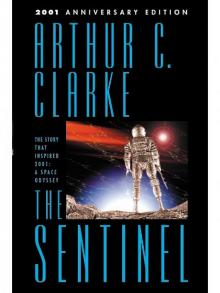 The Sentinel
The Sentinel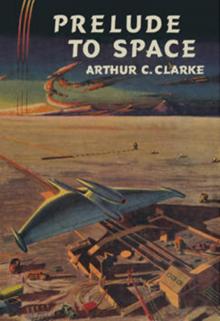 Prelude to Space
Prelude to Space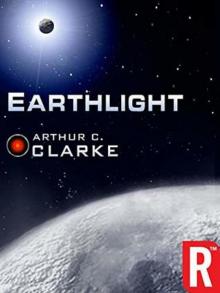 Earthlight (Arthur C. Clarke Collection)
Earthlight (Arthur C. Clarke Collection)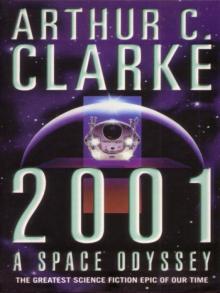 2001: A Space Odyssey
2001: A Space Odyssey Against the Fall of Night
Against the Fall of Night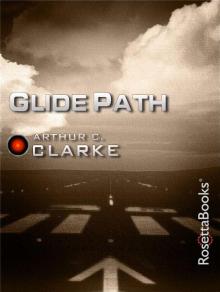 Glide Path
Glide Path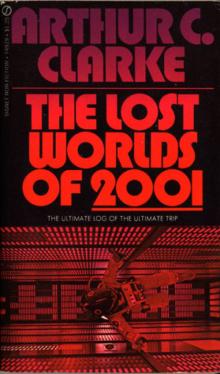 The Lost Worlds of 2001
The Lost Worlds of 2001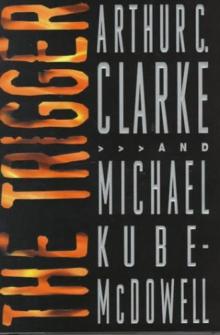 The Trigger
The Trigger Reach for Tomorrow
Reach for Tomorrow Islands in the Sky
Islands in the Sky The Songs of Distant Earth
The Songs of Distant Earth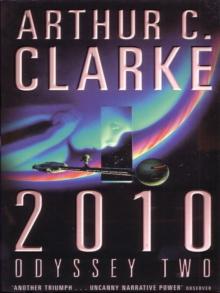 2010: Odyssey Two
2010: Odyssey Two Childhood's End
Childhood's End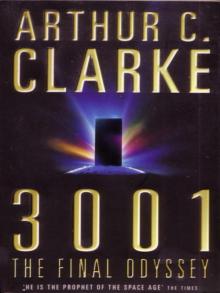 3001: The Final Odyssey
3001: The Final Odyssey The Fountains of Paradise
The Fountains of Paradise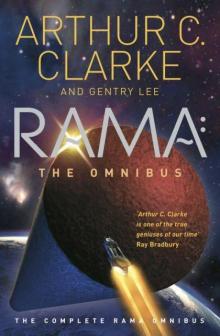 Rama: The Omnibus
Rama: The Omnibus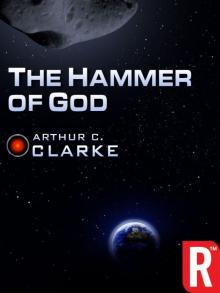 The Hammer of God
The Hammer of God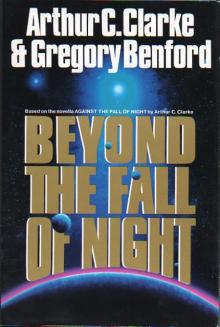 Beyond the Fall of Night
Beyond the Fall of Night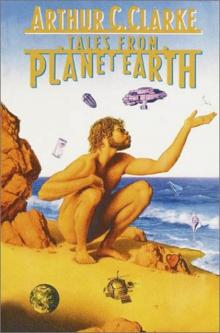 Tales From Planet Earth
Tales From Planet Earth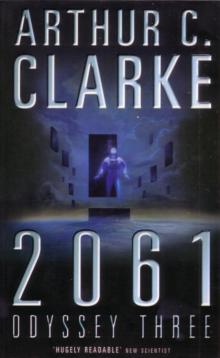 2061: Odyssey Three
2061: Odyssey Three Tales From the White Hart
Tales From the White Hart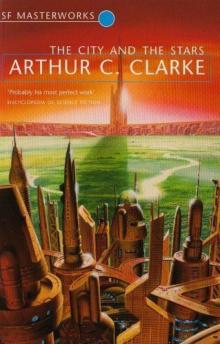 The City and the Stars/The Sands of Mars
The City and the Stars/The Sands of Mars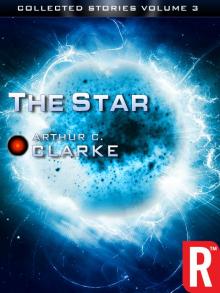 The Star
The Star Imperial Earth
Imperial Earth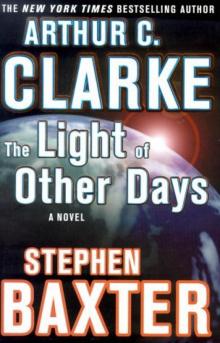 The Light of Other Days
The Light of Other Days Firstborn
Firstborn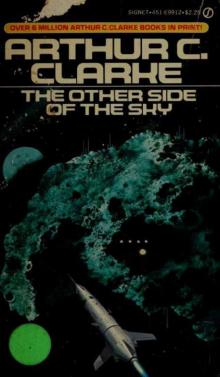 The Other Side of the Sky
The Other Side of the Sky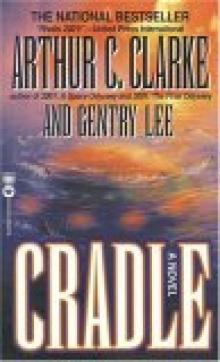 Cradle
Cradle The Wind From the Sun
The Wind From the Sun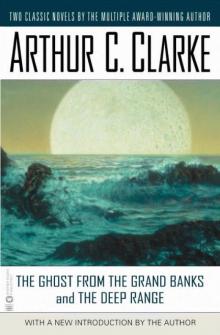 The Ghost From the Grand Banks and the Deep Range
The Ghost From the Grand Banks and the Deep Range The Deep Range
The Deep Range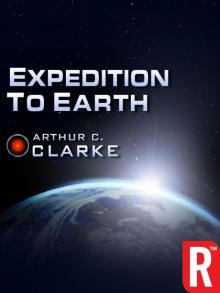 Expedition to Earth
Expedition to Earth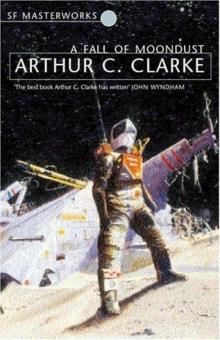 A Fall of Moondust
A Fall of Moondust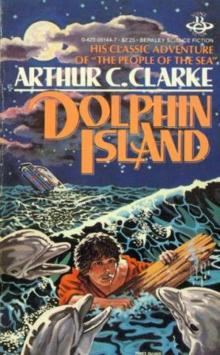 Dolphin Island (Arthur C. Clarke Collection)
Dolphin Island (Arthur C. Clarke Collection) Richter 10
Richter 10 The City and the Stars
The City and the Stars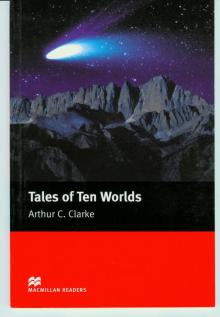 Tales of Ten Worlds
Tales of Ten Worlds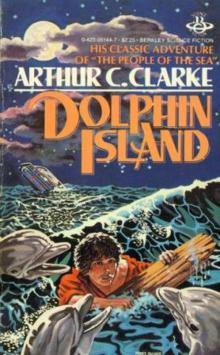 Dolphin Island
Dolphin Island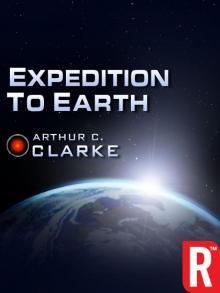 Expedition to Earth (Arthur C. Clarke Collection: Short Stories)
Expedition to Earth (Arthur C. Clarke Collection: Short Stories)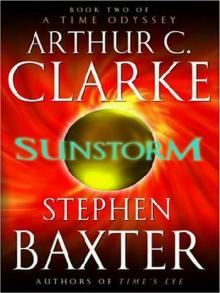 Sunstorm
Sunstorm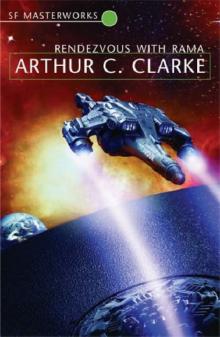 Rendezvous with Rama
Rendezvous with Rama The Collected Stories of Arthur C. Clarke
The Collected Stories of Arthur C. Clarke Trouble with the Natives
Trouble with the Natives Rama Revealed r-4
Rama Revealed r-4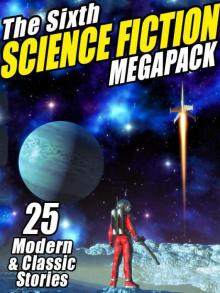 The Sixth Science Fiction Megapack
The Sixth Science Fiction Megapack Firstborn to-3
Firstborn to-3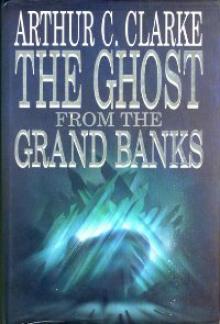 The Ghost from the Grand Banks
The Ghost from the Grand Banks Into the Comet
Into the Comet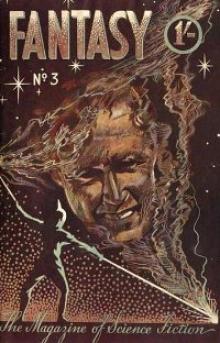 The Fires Within
The Fires Within 2061: Odyssey 3
2061: Odyssey 3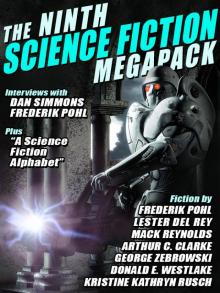 The Ninth Science Fiction Megapack
The Ninth Science Fiction Megapack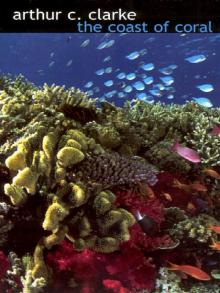 The Coast of Coral
The Coast of Coral The Ghost from the Grand Banks (Arthur C. Clarke Collection)
The Ghost from the Grand Banks (Arthur C. Clarke Collection)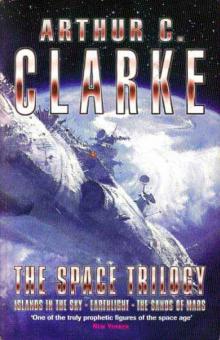 The Space Trilogy
The Space Trilogy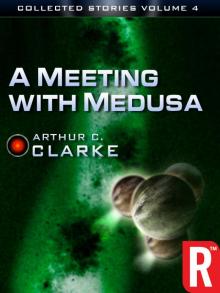 A Meeting With Medusa
A Meeting With Medusa 2001: A Space Odyssey (Arthur C. Clarke Collection: The Odyssey)
2001: A Space Odyssey (Arthur C. Clarke Collection: The Odyssey) Islands in the Sky (Arthur C. Clarke Collection)
Islands in the Sky (Arthur C. Clarke Collection)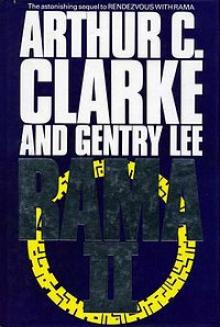 Rama II r-2
Rama II r-2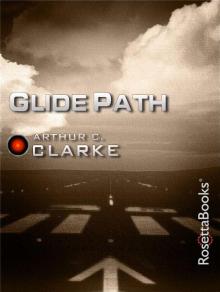 Glide Path (Arthur C. Clarke Collection)
Glide Path (Arthur C. Clarke Collection) The Sixth Science Fiction Megapack: 25 Classic and Modern Science Fiction Stories
The Sixth Science Fiction Megapack: 25 Classic and Modern Science Fiction Stories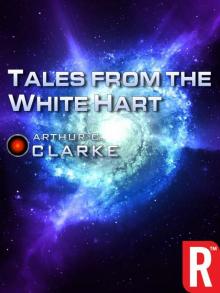 Tales from the White Hart (Arthur C. Clarke Collection: Short Stories)
Tales from the White Hart (Arthur C. Clarke Collection: Short Stories) The Reluctant Orchid
The Reluctant Orchid